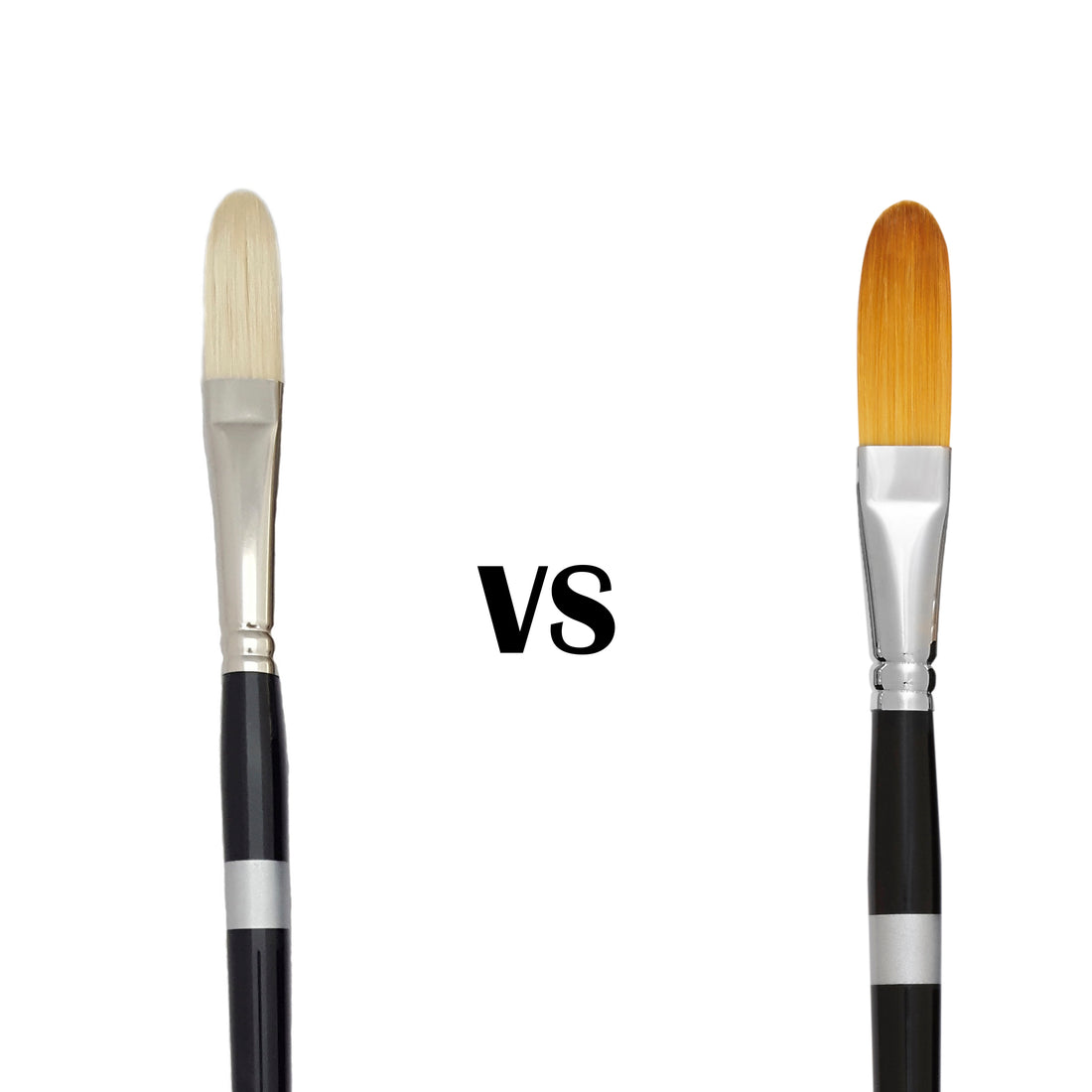Discovering the distinctions between natural and synthetic paint brushes can significantly impact your artistic journey. Whether you consider yourself fancy or not, understanding the features and benefits of each brush type is crucial for selecting the right tool to amplify your creativity. Let's delve into the world of natural and synthetic brushes and explore their unique characteristics.

Natural Brushes: Embracing Tradition and Delicacy
- Natural fibers, such as sable, hog, squirrel, badger, ox, and pony hairs, contribute to the delicate bristles of natural brushes.
- These brushes excel in oil and watercolor painting, as they absorb water and condition well with oil paints.
- While natural brushes hold their shape and offer excellent shape retention, they may not be compatible with acrylics.
- Natural brushes leave visible brushstroke marks, adding character to your artwork.
- Although more expensive, natural brushes evoke considerations of animal rights and environmental sustainability.
Trekell Natural Hair Brushes:

Artist: Elizabeth Zanzinger
Synthetic Brushes: Versatile and Budget-Friendly
- Made of nylon or polyester, synthetic brushes aim to replicate the properties of natural brushes without the need for delicate care.
- They are suitable for acrylics, oils, and watercolors, making them versatile tools for artists.
- Synthetic brushes hold and release paint more efficiently, providing excellent coverage.
- These brushes tend to splay more easily but offer a smoother finish with minimal brush marks.
- Synthetic brushes are budget-friendly and do not exploit animals.
- They are suitable for artists of all skill levels, from beginners to experts.
Trekell Synthetic Brushes:
- Golden Taklon - 6" Handle
- Golden Taklon - 10" Handle
- Crimson Taklon - 6" Handle
- Crimson Taklon - 10" Handle
- Sienna
- Spectrum
- Opal
- Protégé
- Protégé Plus
- Onyx
- Legion
- Mop

Artist: Lola Gil
Choosing the Right Brush for Your Artistic Journey
Consider your preferred medium, skill level, artistic goals, and budget when deciding between natural and synthetic brushes. Natural brushes are ideal for oil and watercolor painting but may not withstand acrylic paints. They offer a traditional feel and shape retention, albeit at a higher price point. On the other hand, synthetic brushes are versatile, budget-friendly, and suitable for various mediums, making them an excellent choice for artists of all levels.

Equip Yourself with the Right Tools and Unleash Your Creativity
Regardless of your artistic proficiency, using the appropriate tools is essential for achieving remarkable results. Whether you're embarking on a serious artistic endeavor or enjoying a casual art-related pursuit, ensure you have the right brushes at your disposal. Embrace the nuances of natural and synthetic brushes, and let your creativity flourish with the perfect brush in hand.

Amplify Your Creativity with Trekell Art Supplies!




